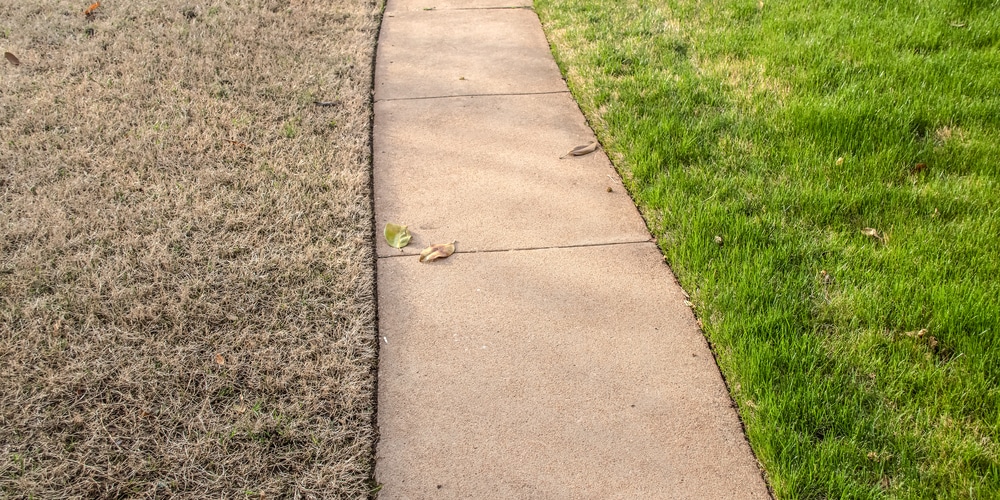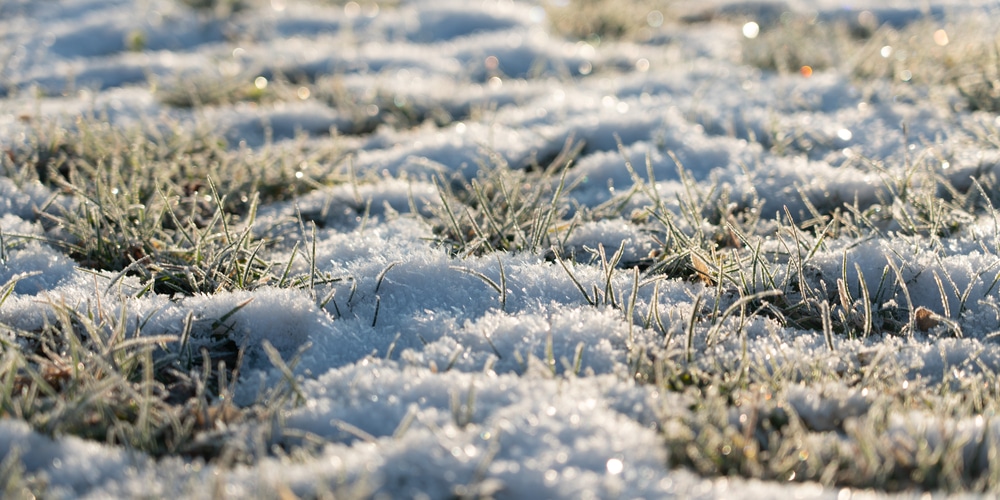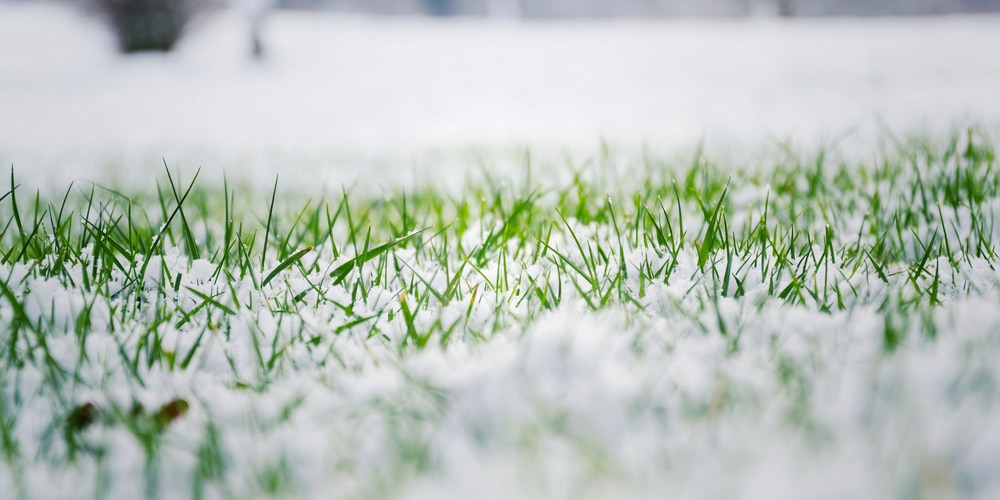Winter Lawn Care: Protecting Your Grass Seed from the Cold
When temperatures drop, your lawn’s health depends on the correct preparation and the selection of appropriate grasses.
Precision in executing winter lawn care tactics can ensure your lawn emerges in spring in prime condition.
Evaluating Your Climate
- Zones and Frost Dates: Identifying your USDA hardiness zone is crucial as it dictates the frost dates and the kind of care needed.
- Precipitation Patterns: Note annual snowfall or rainfall levels in winter, as these will impact the dryness and hydration needs of your grass.
- Temperature Fluctuations: Frequent temperature shifts can be stressful for grass, requiring more resilient seed types or protective measures.
Grass Seed Types for Cold Weather
- Cool-Season Grasses: These types thrive in areas with cold winters and include:
- Kentucky Bluegrass
- Perennial Ryegrass
- Fine Fescue
- Transition Zone Grasses: If you live in an area with moderate winters, consider:
- Tall Fescue
- Thermal Blue Hybrid
Grasses like Kentucky Bluegrass exhibit excellent cold tolerance, making them a top pick for regions facing harsh winters. In contrast, Tall Fescue, with its deep rooting system, is more adaptable to temperature swings common in transition zones.
For your lawn, choose a grass type suited to withstand your specific winter conditions.
Preparing the Lawn for Winter
Winter preparation is vital for a healthy lawn come spring.
Specific steps like soil testing, aeration, seeding, and proper fertilization establish a robust foundation to withstand the cold.
Soil Testing and Amendment
Before the frost sets in, it’s crucial to know what your lawn’s soil needs.
Performing a soil test can reveal nutrient deficiencies and pH imbalances.
Based on the results:
- Amend your soil with the recommended nutrients.
- Apply lime if your soil is too acidic, or sulfur if it’s too alkaline.
Testing your soil lets you tailor winterization to your lawn’s unique profile, ensuring strong roots and healthy grass.
Aeration and Overseeding
Compacted soil hinders root growth and nutrient absorption. Here’s how to tackle it:
- Aerate your lawn to allow air, water, and nutrients to penetrate the soil.
- Overseed to fill in thin areas and build up density.
This one-two punch revitalizes your lawn, encouraging thicker growth that can crowd out weeds.
Pre-Winter Fertilization
Your lawn’s last meal before the big chill should be a hearty one. Consider the following:
- Select a fertilizer: Look for a mix high in potassium for winter hardiness.
- Timing: Fertilize after the first few cold snaps when the grass stops growing but before the ground freezes.
Feeding your lawn correctly before winter helps it endure the cold and bounce back in the spring.
Protective Measures for Grass Seed
When temperatures drop, your grass seed requires specific care to survive the cold.
Employing protective strategies such as mulching, covering, and adapting watering techniques can safeguard your grass during winter.
Mulching Techniques
- Straw Mulch: Apply a thin layer of straw over the newly sown grass seed. This method retains heat and moisture, which are essential for germination in colder climates.
- Aim for a cover that allows 50% of the soil to remain visible; this ensures that light and air can still reach the seeds.
- Leaf Mulch: Shredded leaves can also protect your grass seed by providing insulation. However, be cautious as heavy layers may impede growth—use sparingly.
Using Covers and Blankets
- Frost Blankets: Lay frost blankets directly over your lawn areas where grass seed has been applied. These covers provide a barrier against frost and can be easily removed once temperatures are more favorable.
- Burlap: If frost blankets are not available, burlap can be a suitable alternative. Secure it with stakes to protect your seeds without smothering them.
Watering in Cold Weather
- Morning Watering: Water your lawn in the morning, allowing the sun to warm the soil and assist with absorption.
- Avoid Overwatering: Too much water can lead to ice formation around your seeds, which is detrimental. Water sparingly and only when the soil appears dry.
Post-Winter Recovery

As the snow melts and the first signs of spring emerge, it’s crucial to evaluate the condition of your lawn and implement effective strategies for a lush, healthy turf.
Assessing Winter Damage
- Check for bare spots: These may need reseeding or patching.
- Look for discoloration or thin areas: This could indicate grass stress or disease.
- Inspect for moss or weed growth: These opportunistic invaders can take over during the colder months.
Spring Lawn Care Strategies
- Cleanup: Gently rake to remove debris and matted grass to prevent disease and allow the new grass to grow.
- Aeration: If soil is compacted, aerating helps oxygen, water, and nutrients to reach the roots.
- Fertilizing: Apply a balanced fertilizer to provide essential nutrients and promote vigorous growth.
- Overseeding: This can thicken your lawn and discourage weeds by overcrowding them.
- Proper Mowing: Keep your blades sharp and never remove more than one-third of the grass height at a time. Adjust cutting heights as growth accelerates in spring.
Frequently Asked Questions
In this section, you’ll find precise answers to common concerns about how cold conditions affect grass seed and new grass growth during winter.
What temperature kills grass seed?
Most grass seeds require soil temperatures above 50°F to germinate effectively.
Prolonged exposure to temperatures below 32°F can damage or kill grass seeds before they have a chance to sprout.
Will light frost kill new grass?
Light frost typically doesn’t kill new grass, but it can slow down growth.
Young grass that has been properly hardened off can usually withstand light frost without significant damage.
Is 50 degrees too cold to water grass?
No, 50 degrees is not too cold to water grass.
However, it is crucial to water your lawn during the warmest part of the day so it has a chance to absorb the water before potentially colder nighttime temperatures.
Does straw protect grass seed from frost?
Yes, spreading a thin layer of straw can provide a protective barrier for grass seed against frost.
It helps to insulate the soil, retaining heat and moisture which are essential for germination.
What temperature is too cold to water grass seed?
You should avoid watering grass seed when temperatures are expected to drop below freezing within 24 hours.
Ice formation can damage new seedlings and disrupt the soil structure.
Can I plant grass seed if it freezes at night?
Planting grass seed when it freezes at night is not advisable. Freezing temperatures can harm the seeds or their ability to germinate.
It’s best to plant grass seed during more stable conditions where freezing nighttime temperatures are not expected.
Last update on 2025-06-06 / Affiliate links / Images from Amazon Product Advertising API




